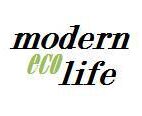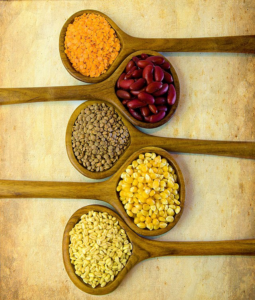Since there is not a complete list of products that contain GMO’s it is hard to know if the food we are eating is GM. Currently, the only way to be sure that food is free from GMO’s is to buy organic, but cost and availability can often impact this choice for many families.

80% of all processed foods contains GMO’s
If going completely organic is not an option, then learning about what foods are considered high-risk can help assist you in determining what foods should be purchase organically grown.
High-Risk Crops (in commercial production; ingredients derived from these must be tested every time prior to use:
- Alfalfa (first planting 2011)
- Canola (approx. 90% of U.S. crop)
- Corn (approx. 88% of U.S. crop)
- Cotton (approx. 90% of U.S. crop)
- Papaya (most of Hawaiian crop; approximately 988 acres)
- Soy (approx. 94% of U.S. crop)
- Sugar Beets (approx. 95% of U.S. crop)
- Zucchini and Yellow Summer Squash (approx. 25,000 acres)
ALSO high-risk are animal products (milk, meat, eggs, honey, etc.) because of contamination in the animal feed.
According to the Grocer’s Manufactures Association, 80% of all processed foods contains GMO’s. To give you an idea of GM foods it includes: baby food (biscuits, formulas), baking mixes (pancake, cornbread, cakes, pie crusts, cookie), bread (english muffins, buns), cereal & granola bars, breakfast cereals, chocolate & candy, drink mixes, dessert toppings, condiments, oils, dressings, salsa, cookies & crackers, energy bars, spices, grains, pasta, heat and serve meals, sauces, frozen pizza, microwave popcorn, chips, soda, soup & stews and vitamins. And this is not a comprehensive list, just items that contain some of the ingredients listed above.
Your best defense is to educate yourself. Unless the products are labeled NON-GMO or Organic, then GMO ingredients could very likely be present.
More Stories
Toss Those Plastic Cutting Boards!
Ditching plastic cutting boards can be beneficial for several reasons, encompassing health, and practical considerations: Photo: Economics Health Concerns Microplastic...
Unveiling the Secret Ingredient: How Crickets are Already in Our Food
Photo: Neil.Dalphin Cricket powder stands as a promising solution to the global challenge of sustainable food production. However, as with...
Harnessing Hydrogenated Water: A Refreshing Journey Towards Wellness
Trends come and go like passing clouds, hydrogenated water has emerged as a beacon of hope, promising not just hydration...
With Grocery High Prices, We Have To Think Outside The Box!
Photo: Michal Klajban I don’t know about you, but every time I go to the grocery store, I am continually...
Life & Yoga: Remember to Breathe!
Losing weight is a relatively easy concept; eat less and move more. Yet, weight loss is a $60 billion dollar...
Can Going Gluten-Free Cause Nutrient Deficiencies?
Photo: Mark Morgan As a Holistic Health Counselor, I’m not interested much in mainstream nutritional recommendations. For my clients, I...


